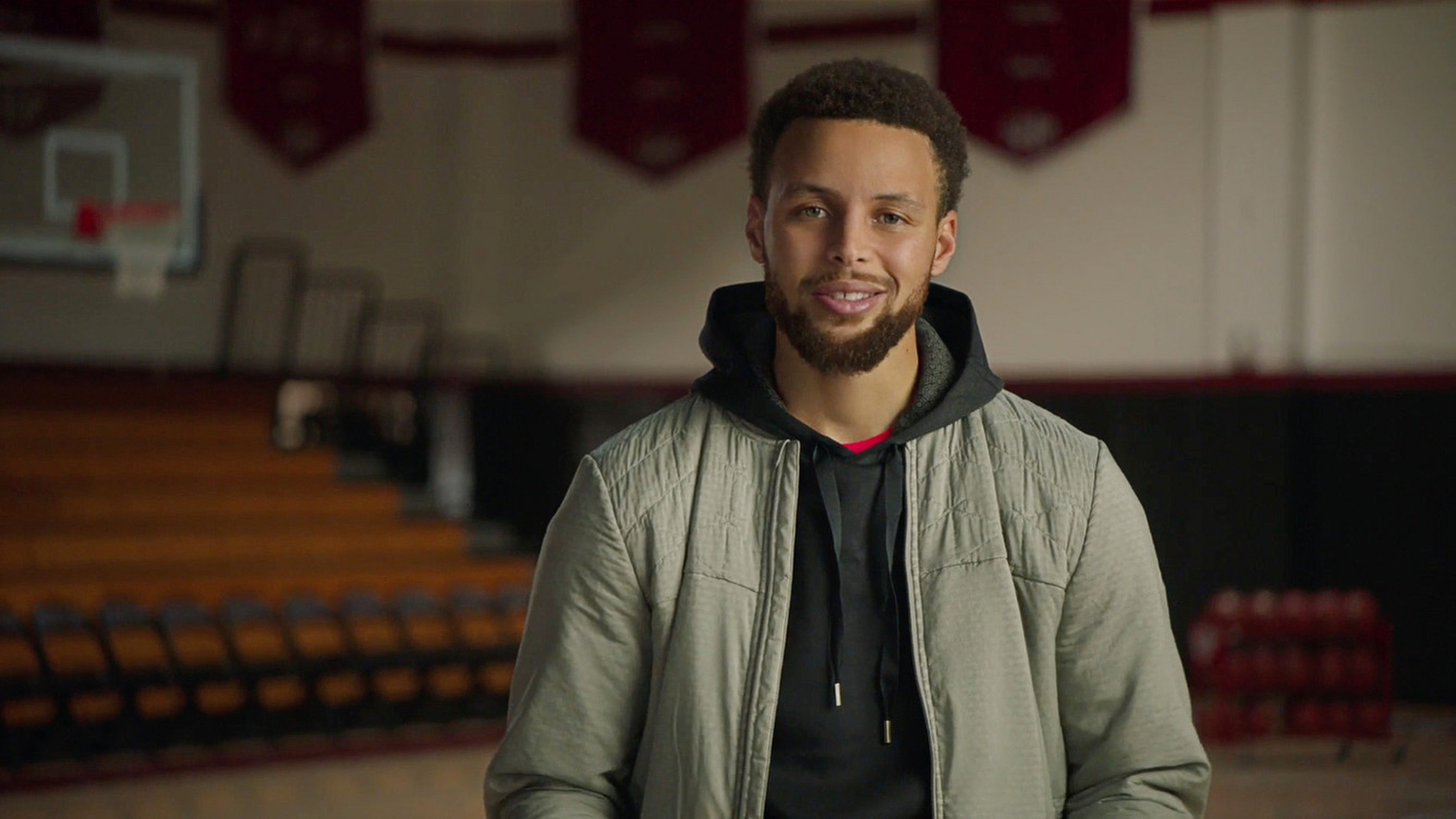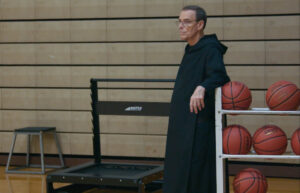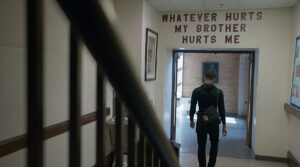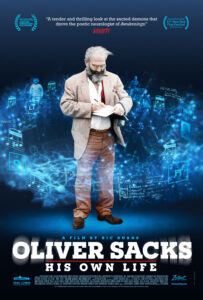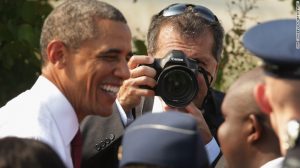Critics Choice Nominees for Documentary Awards
Posted on October 26, 2020 at 11:38 am
The Critics Choice Association (CCA) has announced the nominees for the fifth annual Critics Choice Documentary Awards (CCDA). The winners will be revealed in a Special Announcement on Monday, November 16, 2020.
Netflix leads the nominations with 31, followed by Neon (14), Magnolia Pictures (9), HBO (5), Showtime (6), and Amazon, National Geographic, and PBS Independent Lens with 5 each.
Crip Camp: A Disability Revolution, Gunda, and Mr. SOUL! lead this year’s nominations with five each.
Crip Camp: A Disability Revolution is nominated for Best Documentary Feature, James Lebrecht and Nicole Newnham for Best Director, Best Editing, Best Archival Documentary, and Best Historical/Biography Documentary. The film also received an honor for Judith Heumann for Most Compelling Living Subject of a Documentary.
Gunda is nominated for Best Documentary Feature, Victor Kossakovsky for Best Director, Best Cinematography, Best Editing, and Best Science/Nature Documentary.
Mr. SOUL! is nominated for Best Documentary Feature, Best First Documentary Feature, Best Narration, Best Archival Documentary, and Best Historical/Biographical Documentary.
Recognized with four nominations each are Athlete A, Dick Johnson is Dead, My Octopus Teacher, and Totally Under Control.
The nominations for Athlete A are Best Documentary Feature, Bonni Cohen and Jon Shenk for Best Director, Best Editing, and Best Sports Documentary. Maggie Nichols, Rachael Denhollander, and Jamie Dantzscher are also being recognized with the honor of Most Compelling Living Subjects of a Documentary.
The nominations for Dick Johnson is Dead are Best Documentary Feature, Kirsten Johnson for Best Director, Best Cinematography, and Best Narration. The film also received an honor for Dick Johnson for Most Compelling Living Subject of a Documentary.
The nominations for My Octopus Teacher are Best Documentary Feature, Best Cinematography, Best Narration, and Best Science/Nature Documentary.
The nominations for Totally Under Control are Best Editing, Best Score, Best Narration, and Best Political Documentary. The film also received an honor for Dr. Rick Bright for Most Compelling Living Subject of a Documentary.
“At a unique time for the entertainment industry and the world, documentaries are more important and fortunately more abundant and more available and more essential than ever,” said Christopher Campbell, President of the Critics Choice Association Documentary Branch. “In 2020, documentaries have taken us to places and shown us perspectives we’ve never experienced before. They’ve chronicled events and life stories that are enlightening and enthralling – and sometimes frightening. It is a great honor for the CCA to celebrate these stories and subjects and shed light on the work of so many incredible filmmakers. The Documentary Branch faced its greatest task yet considering the quantity and quality of nonfiction cinema released this year. Ultimately, these nominees represent the best of the best of a remarkably fruitful moment for documentary filmmaking.”
Congratulations to all of the very worthy nominees. I look forward to the difficult decision about which will get my votes.
The nominees for the fifth annual Critics Choice Documentary Awards are:
BEST DOCUMENTARY FEATURE
Athlete A (Netflix)
Belushi (Showtime)
Crip Camp: A Disability Revolution (Netflix)
Dick Johnson is Dead (Netflix)
Feels Good Man (Wavelength Productions/PBS Independent Lens)
The Fight (Magnolia Pictures)
The Go-Go’s (Showtime)
Gunda (Neon)
Mr. SOUL! (Shoes in the Bed Productions)
My Octopus Teacher (Netflix)
The Painter and the Thief (Neon)
A Secret Love (Netflix)
The Social Dilemma (Netflix)
Time (Amazon Studios)
BEST DIRECTOR
Garrett Bradley, Time (Amazon Studios)
Bonni Cohen and Jon Shenk, Athlete A (Netflix)
Kirsten Johnson, Dick Johnson is Dead (Netflix)
Victor Kossakovsky, Gunda (Neon)
James Lebrecht and Nicole Newnham, Crip Camp: A Disability Revolution (Netflix)
Dawn Porter, John Lewis: Good Trouble (Magnolia Pictures)
Benjamin Ree, The Painter and the Thief (Neon)
BEST FIRST DOCUMENTARY FEATURE
Robert S. Bader, Ali & Cavett: The Tale of the Tapes (HBO)
Chris Bolan, A Secret Love (Netflix)
Melissa Haizlip, Mr. SOUL! (Shoes in the Bed Productions)
Arthur Jones, Feels Good Man (Wavelength Productions/PBS Independent Lens)
Elizabeth Leiter and Kim Woodard, Jane Goodall: The Hope (National Geographic)
Elizabeth Lo, Stray (Magnolia Pictures)
Sasha Joseph Neulinger, Rewind (Grizzly Creek Films/PBS Independent Lens)
BEST CINEMATOGRAPHY
Michael Dweck and Gregory Kershaw, The Truffle Hunters (Sony Pictures Classics)
Roger Horrocks, My Octopus Teacher (Netflix)
Kirsten Johnson, Dick Johnson is Dead (Netflix)
Victor Kossakovsky and Egil Håskjold Larsen, Gunda (Neon)
Scott Ressler, Neil Gelinas and Stefan Wiesen, The Last Ice (National Geographic)
Gianfranco Rosi, Notturno (Stemal Entertainment)
Ruben Woodin Dechamps, The Reason I Jump (Kino Lorber)
BEST EDITING
Don Bernier, Athlete A (Netflix)
Eli Despres, Greg Finton and Kim Roberts, The Fight (Magnolia Pictures)
Lindy Jankura and Alex Keipper, Totally Under Control (Neon)
Helen Kearns, Assassins (Greenwich Entertainment)
Victor Kossakovsky and Ainara Vera, Gunda (Neon)
Eileen Meyer and Andrew Gersh, Crip Camp: A Disability Revolution (Netflix)
Charlotte Munch Bengtsen, The Truffle Hunters (Sony Pictures Classics)
BEST SCORE
Ari Balouzian and Ryan Hope, Feels Good Man (Wavelength Productions/PBS Independent Lens)
Marco Beltrami, Brandon Roberts and Buck Sanders, The Way I See It (Focus Features)
Tyler Durham, Sven Faulconer and Xander Rodzinski, The Last Ice (National Geographic)
Peter Nashel and Brian Deming, Totally Under Control (Neon)
Daniel Pemberton, Rising Phoenix (Netflix)
Jeff Tweedy, Long Gone Summer (ESPN)
Jeff Tweedy, Spencer Tweedy and Sammy Tweedy, Showbiz Kids (HBO)
BEST NARRATION
David Attenborough: A Life on Our Planet (Netflix)
David Attenborough, Narrator
David Attenborough, Writer
Dick Johnson is Dead (Netflix)
Kirsten Johnson, Narrator
Kirsten Johnson, Writer
Fireball: Visitors From Darker Worlds (Apple)
Werner Herzog, Narrator
Werner Herzog, Writer
Mr. SOUL! (Shoes in the Bed Productions)
Blair Underwood, Narrator
Ellis Haizlip, Writer
My Octopus Teacher (Netflix)
Craig Foster, Narrator
Craig Foster, Writer
Time (Amazon Studios)
Fox Rich, Narrator
Fox Rich, Writer
Totally Under Control (Neon)
Alex Gibney, Narrator
Alex Gibney, Writer
BEST ARCHIVAL DOCUMENTARY
Ali & Cavett: The Tale of the Tapes (HBO)
Belushi (Showtime)
Class Action Park (HBO)
Crip Camp: A Disability Revolution (Netflix)
MLK/FBI (Field of Vision/IFC Films)
Mr. SOUL! (Shoes in the Bed Productions)
Spaceship Earth (Neon)
BEST HISTORICAL/BIOGRAPHICAL DOCUMENTARY
Belushi (Showtime)
Crip Camp: A Disability Revolution (Netflix)
Howard (Disney+)
John Lewis: Good Trouble (Magnolia Pictures)
Mr. SOUL! (Shoes in the Bed Production)
Mucho Mucho Amor: The Legend of Walter Mercado (Netflix)
Natalie Wood: What Remains Behind (HBO)
BEST MUSIC DOCUMENTARY
Beastie Boys Story (Apple)
Crock of Gold: A Few Rounds with Shane MacGowan (Magnolia Pictures)
The Go-Go’s (Showtime)
Laurel Canyon (Epix)
Once Were Brothers: Robbie Robertson and The Band (Magnolia Pictures)
Other Music (Factory 25)
Zappa (Magnolia Pictures)
BEST POLITICAL DOCUMENTARY
All In: The Fight for Democracy (Amazon Studios)
Boys State (Apple)
John Lewis: Good Trouble (Magnolia Pictures)
MLK/FBI (Field of Vision/IFC Films)
The Social Dilemma (Netflix)
Totally Under Control (Neon)
The Way I See It (Focus Features)
BEST SCIENCE/NATURE DOCUMENTARY
Coded Bias (7th Empire Media/PBS Independent Lens)
Fantastic Fungi (Moving Art)
Gunda (Neon)
I Am Greta (Hulu)
The Last Ice (National Geographic)
My Octopus Teacher (Netflix)
Spaceship Earth (Neon)
BEST SPORTS DOCUMENTARY
Ali & Cavett: The Tale of the Tapes (HBO)
Athlete A (Netflix)
Be Water (ESPN)
A Most Beautiful Thing (50 Eggs Films)
Red Penguins (Universal Pictures)
Rising Phoenix (Netflix)
You Cannot Kill David Arquette (Super LTD)
BEST SHORT DOCUMENTARY
Blackfeet Boxing: Not Invisible (ESPN)
(Directors: Kristen Lappas and Tom Rinaldi. Producers: Craig Lazarus, José Morales, Lindsay Rovegno, Victor Vitarelli and Ben Webber)
The Claudia Kishi Club (Netflix)
(Director and Producer: Sue Ding)
Crescendo! (Quibi)
(Director: Alex Mallis. Producers: Matt O’Neill and Perri Peltz)
Elevator Pitch (Field of Vision)
(Director and Producer: Martyna Starosta)
Hunger Ward (Spin Film/Vulcan Productions/RYOT Films)
(Director and Producer: Skye Fitzgerald. Producer: Michael Scheuerman)
Into the Fire (National Geographic)
(Director: Orlando von Einsiedel. Producers: Mark Bauch, Harri Grace and Dan Lin)
My Father the Mover (MTV Documentary Films)
(Director: Julia Jansch. Producer: Mandilakhe Yengo)
The Rifleman (Field of Vision)
(Director: Sierra Pettengill. Producer: Arielle de Saint Phalle)
The Speed Cubers (Netflix)
(Director and Producer: Sue Kim. Producers: Evan Krauss and Chris Romano)
St. Louis Superman (MTV Documentary Films)
(Directors and Producers: Sami Khan and Smriti Mundhra. Producer: Poh Si Teng)
MOST COMPELLING LIVING SUBJECTS OF A DOCUMENTARY (HONOR)
Dr. Rick Bright – Totally Under Control (Neon)
Steven Garza – Boys State (Apple)
The Go-Go’s – The Go-Go’s (Showtime)
Judith Heumann – Crip Camp: A Disability Revolution (Netflix)
Dick Johnson – Dick Johnson is Dead (Netflix)
Maggie Nichols, Rachael Denhollander, Jamie Dantzscher – Athlete A (Netflix)
Fox Rich – Time (Amazon)
Pete Souza – The Way I See It (Focus Features)
Taylor Swift – Miss Americana (Netflix)
Greta Thunberg – I Am Greta (Hulu)

